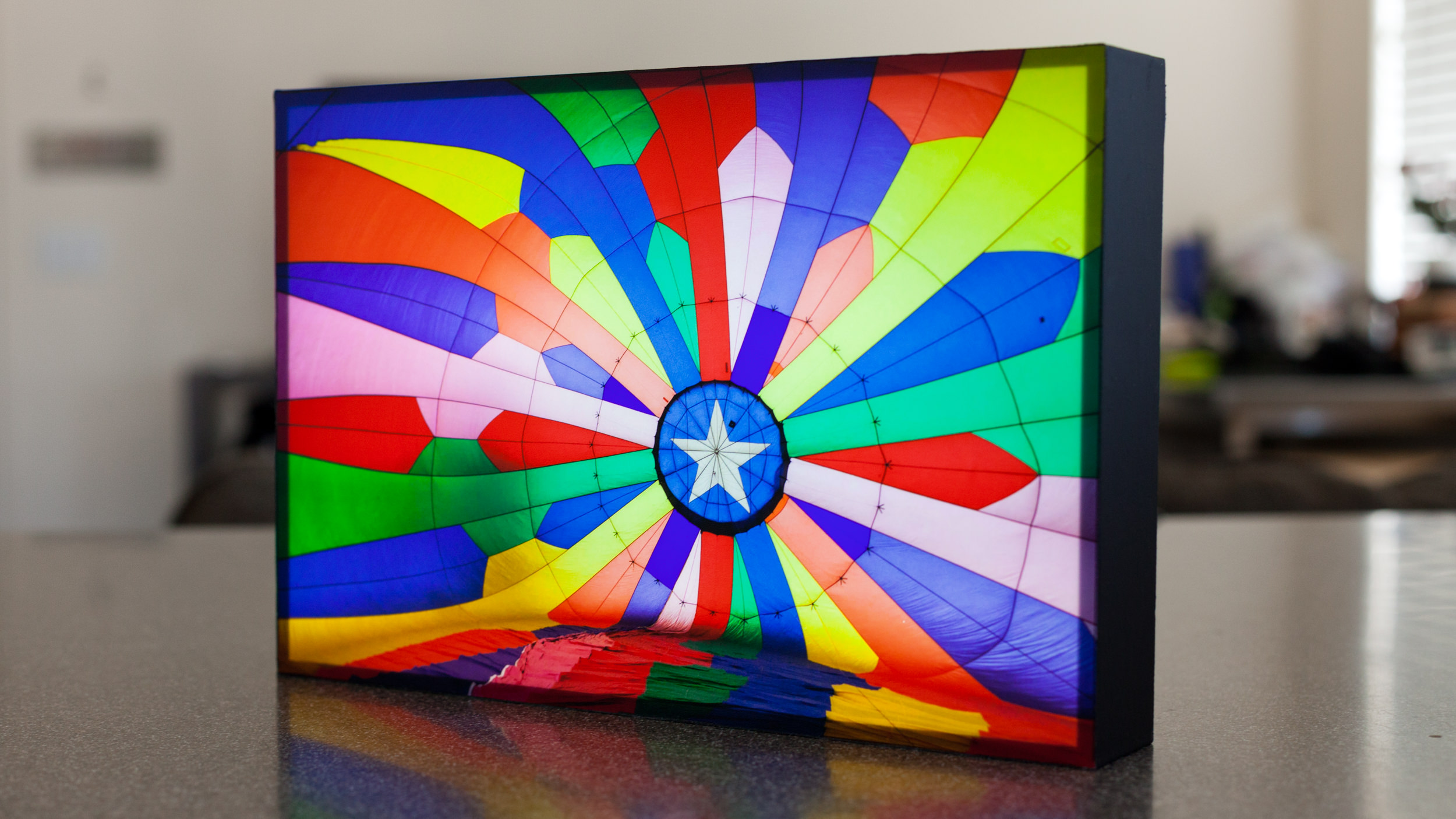
What is digital printing film, what is unique about it, and where will it go?
Basic knowledge of digital printing film
Digital printing film is a key consumable for digital printing equipment. From the appearance, some types of digital printing film have similar shapes and volumes to traditional 135 film, which facilitates its use on some compatible devices. Its core function is to serve as a carrier for image recording, and it plays an irreplaceable role in the digital printing process. When the digital printing machine is operating, the equipment converts digital information into images through specific technologies and presents them on digital printing film. Unlike traditional film that records images through chemical reactions, digital printing film uses physical or chemical and physical methods to achieve image recording. Some digital printing films use materials that are sensitive to specific wavelengths of light. Under the action of the light emitted by the equipment, the physical properties of the materials change, thus forming an image.
Tracing the development history
The development of digital printing film is closely linked to the digitalization of printing technology. In the early days, the printing industry mainly relied on traditional offset printing technology to print large quantities of static documents through printing plates, inks, etc. With the rise of computer technology and digital imaging technology, the printing field began to explore more efficient and flexible printing methods, digital printing came into being, and digital printing film also gradually developed. At first, the performance of digital printing film was not perfect, and there was a big gap with traditional film in terms of image quality and sensitivity. However, with the continuous advancement of material science and manufacturing technology, digital printing film has significantly improved in all aspects of performance. R&D personnel continue to try new materials and coating technologies to improve the film's adsorption performance for different inks and inks, and improve the clarity and color reproduction of images. In this process, related equipment manufacturers are also simultaneously optimizing digital printing equipment to better match it with digital printing film, and jointly promote the development of digital printing technology.
Classification and characteristics
Various product types
Digital printing film is mainly divided into polyvinyl chloride, biaxially oriented polyester film, recycled polyester and other categories according to different materials and performance. Digital printing film made of polyvinyl chloride has certain flexibility and corrosion resistance, and is widely used in some printing scenes that require film flexibility. Film made of biaxially oriented polyester film is known for its good flatness and optical properties. It can present clearer and more delicate images and is often used in printing fields that require high image quality, such as high-quality commercial printing and reproduction of artworks. Digital printing film made of recycled polyester has obvious advantages in environmental protection and conforms to the current concept of sustainable development. With the increasing environmental protection requirements, its application prospects are becoming more and more broad. Other categories include some films made of special materials or with unique properties to meet the needs of specific industries or special printing.
Outstanding performance characteristics
In terms of sensitivity, digital printing film has a variety of sensitivities to choose from. Low-sensitivity film, like a delicate painter who can accurately capture details in a well-lit environment, is suitable for use in good lighting conditions. It can record extremely rich picture details and plays an important role in printing scenes that require strict picture fineness. High-sensitivity film, like a keen observer who can "see everything" in a dim environment, can effectively record images even in a dimly lit environment, making it possible to print some special scenes. In terms of color reproduction, different types of digital printing films perform differently. Some films are committed to highly reproducing true colors, making the colors of printed images almost identical to the original images. They are suitable for fields with extremely high requirements for color accuracy, such as photography printing, product sample printing, etc., to ensure the accurate presentation of product colors. Other films create specific color styles through unique color adjustment, adding a unique artistic atmosphere to printed products, and meeting personalized needs such as creative design and art printing.
Wide application scenarios
Commercial printing field
In commercial printing, digital printing films are very useful. For example, in the printing of product manuals, companies often need to flexibly adjust the content and printing quantity of the manuals according to market demand and product updates. Digital printing films, combined with digital printing machines, can quickly and efficiently complete the entire process from design to printing, and meet short-run and personalized printing needs. Companies can customize product manuals with personalized information according to the characteristics of different customer groups to enhance the publicity effect. In terms of exhibition material printing, the preparation time for the exhibition is often tight, and the printing quantity of the materials is relatively flexible. Digital printing film can meet this kind of fast, small-batch printing demand, ensuring that companies can obtain high-quality promotional materials in time before the exhibition to showcase their corporate image and product advantages.
Advertising production industry
Advertising production has extremely high requirements for the color expression and clarity of the picture. Digital printing film, with its excellent color reproduction and high resolution, can perfectly present the creativity in advertising design. When making outdoor billboards, the film can withstand the test of harsh outdoor environments, keep the colors and clarity of the pictures, and attract the attention of passers-by. In the production of indoor posters, leaflets and other advertising materials, digital printing film can also highlight the theme of the advertisement through precise colors and delicate pictures, enhance the visual impact of the advertisement, and thus improve the communication effect of the advertisement.
Art creation and image reproduction
For artists, digital printing film provides new possibilities for their creation. Painters can use digital printing technology to copy their paintings into high-quality prints through digital printing film, which can not only meet the collection needs of art lovers for their works, but also expand the scope of dissemination of their works. In the field of image reproduction, digital printing film can highly restore the color and details of photos, and reproduce precious old photos, artistic photography works, etc. into high-quality copies for exhibitions, collections or family memories. These reproductions can reach a high level in color, texture and details, allowing more people to appreciate excellent image works.
Comparison with traditional film and other printing methods
Comparison with traditional film
In terms of imaging principle, traditional film relies on photosensitive materials such as silver halide to undergo chemical reactions under the action of light to record images. The whole process is relatively complicated, and it needs to be washed in a specific environment such as a darkroom to see the final image. Digital printing film uses digital technology to convert digital signals into image information and record them on film through equipment. The imaging process is more direct and quick. In terms of ease of use, traditional film needs to carefully set parameters such as sensitivity before shooting, and must be washed after shooting to view the image. If the shooting effect is not ideal, reshooting requires new film. When using digital printing film, the settings of relevant parameters can be flexibly adjusted on the device, and the printing effect can be checked instantly. If necessary, it can be modified and reprinted at any time, which greatly improves work efficiency. In terms of image quality, traditional film has a unique artistic charm in color layering and granularity, which can create a retro and delicate texture. Digital printing film performs well in the accuracy of color reproduction and image clarity, and can present high-quality image effects according to different needs.
Differences from other printing methods
Compared with offset printing, offset printing has cost advantages in large-scale printing, but its printing process is more cumbersome, requiring the production of printing plates, and lacks flexibility in short-run printing and personalized printing. Digital printing film is combined with digital printing machines, without the need for plate making, and can quickly respond to customers' personalized needs, and is more efficient in short-run printing. In terms of printing quality, offset printing performs better in color uniformity and dot fineness, while digital printing film has also reached a high level in color saturation and image detail presentation through continuous technical improvements, especially when processing complex images and gradient effects. Compared with inkjet printing, inkjet printing usually performs well in large-format printing and on materials with good ink absorption. Digital printing film is more adaptable to a variety of materials and has more advantages in some application scenarios that require high film stability and durability. For example, in the printing of archives and important documents that need to be preserved for a long time, digital printing film can ensure the long-term stability of the image and is not easy to fade or damage.





